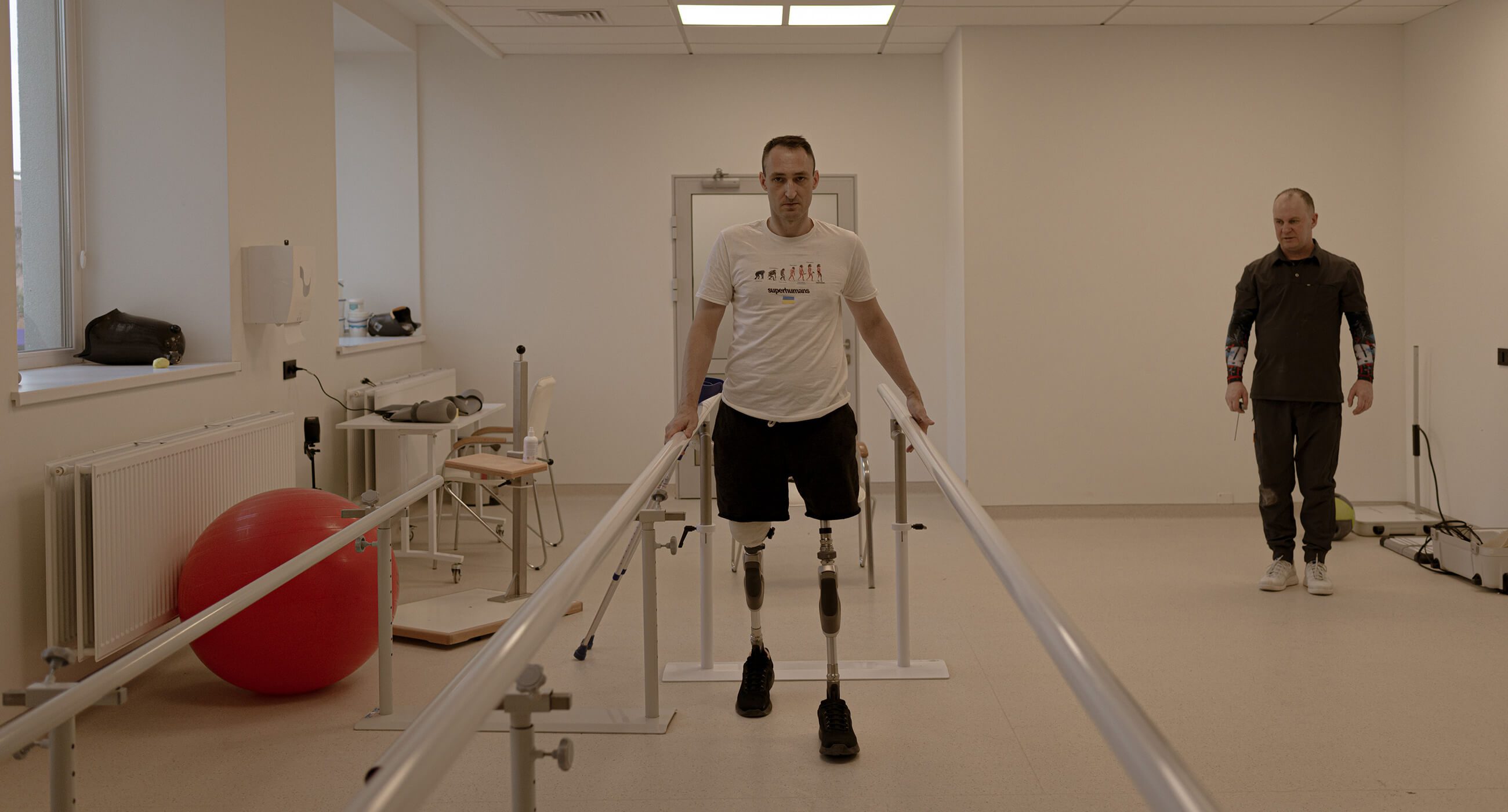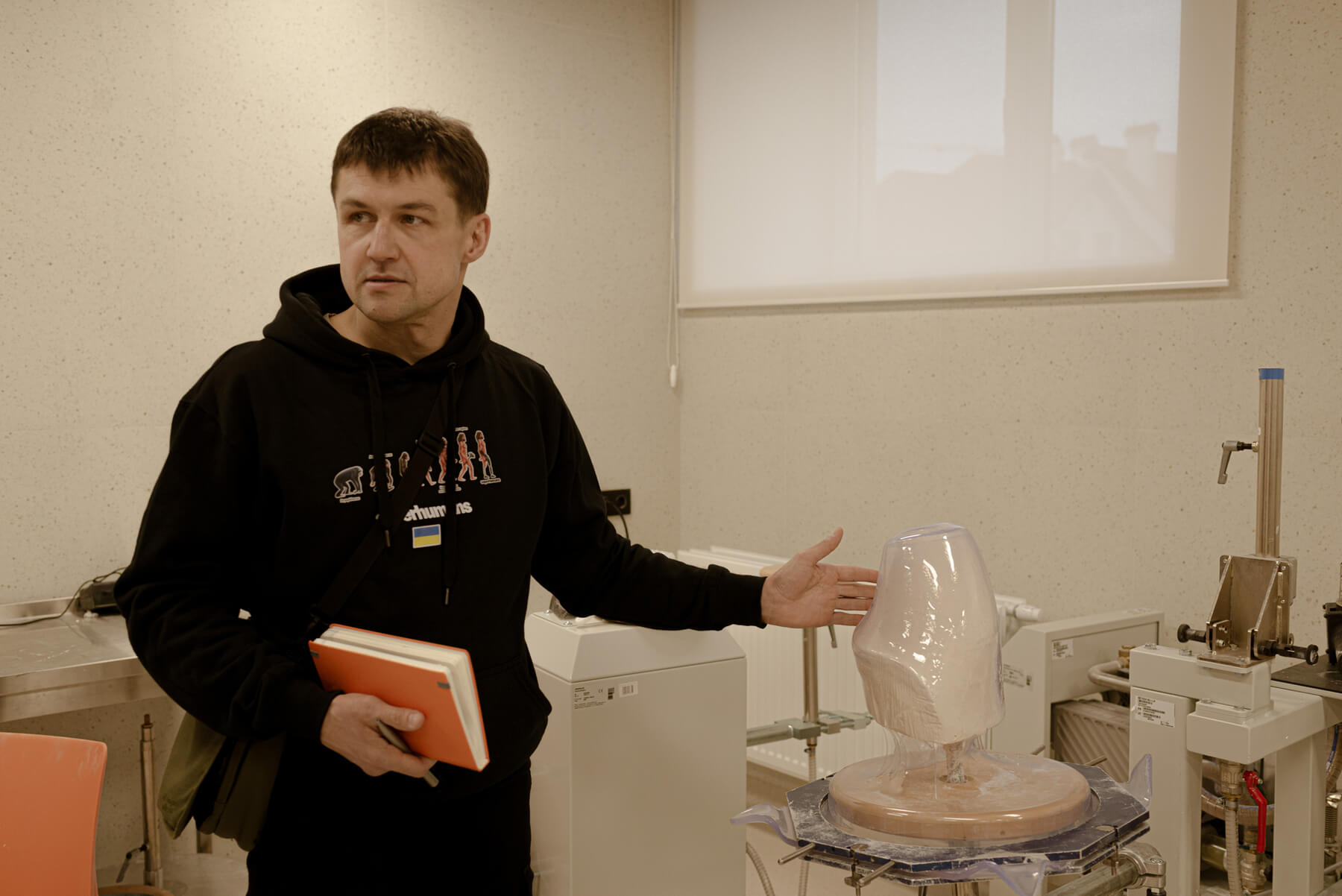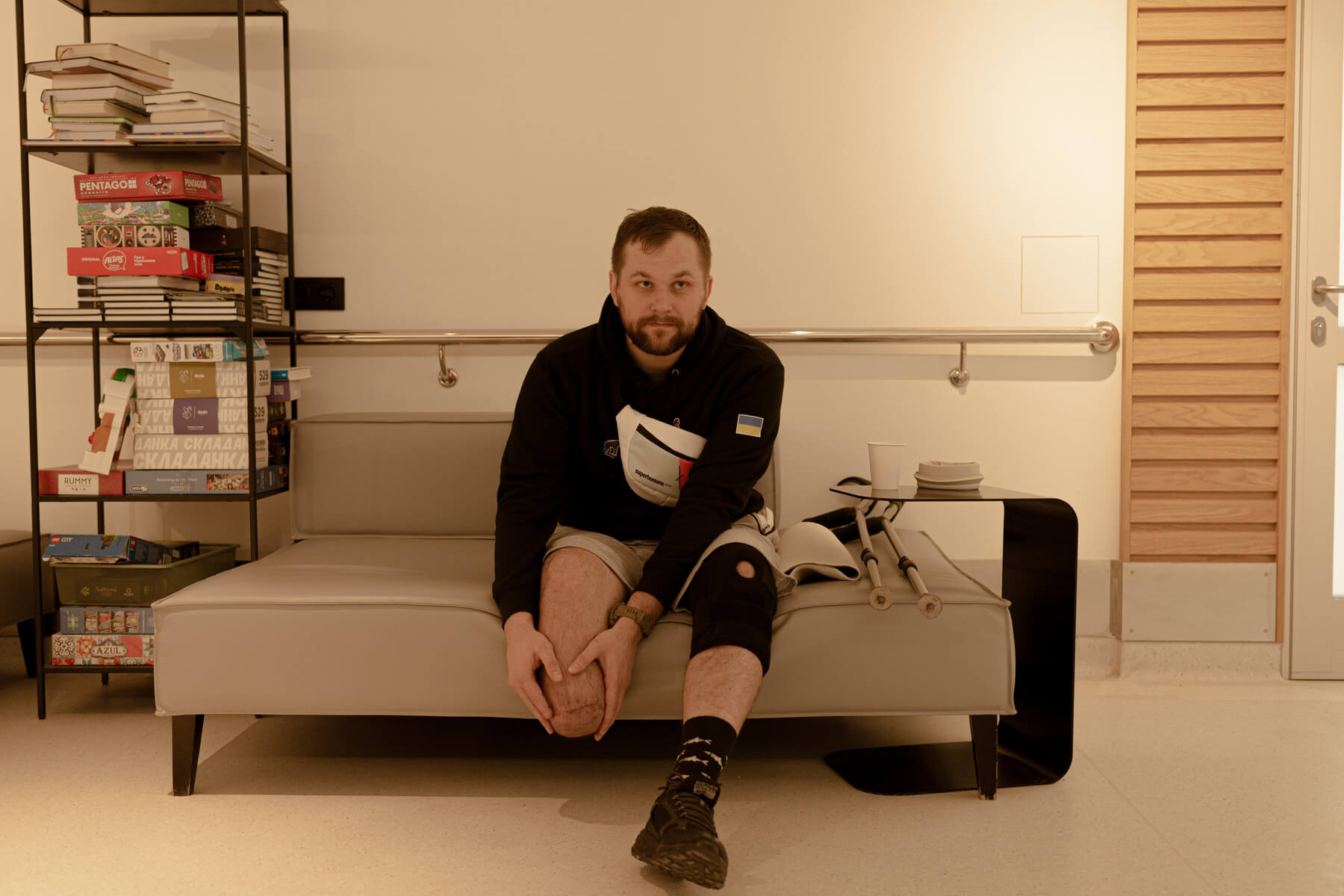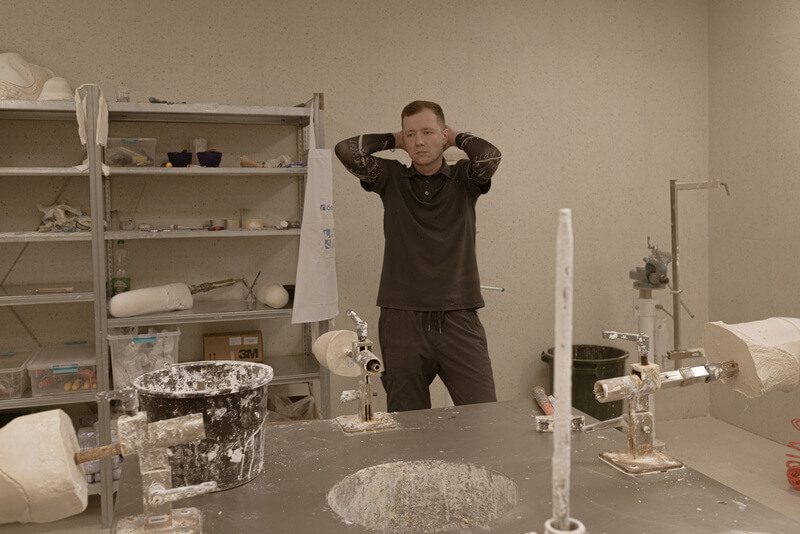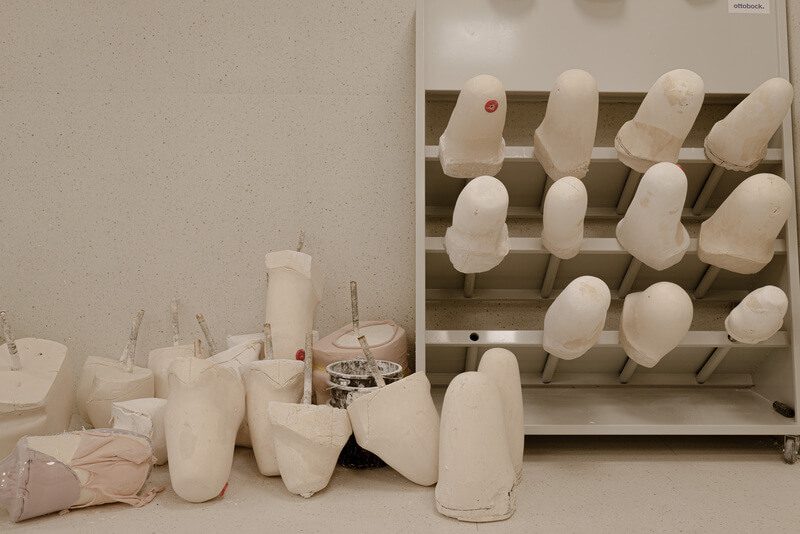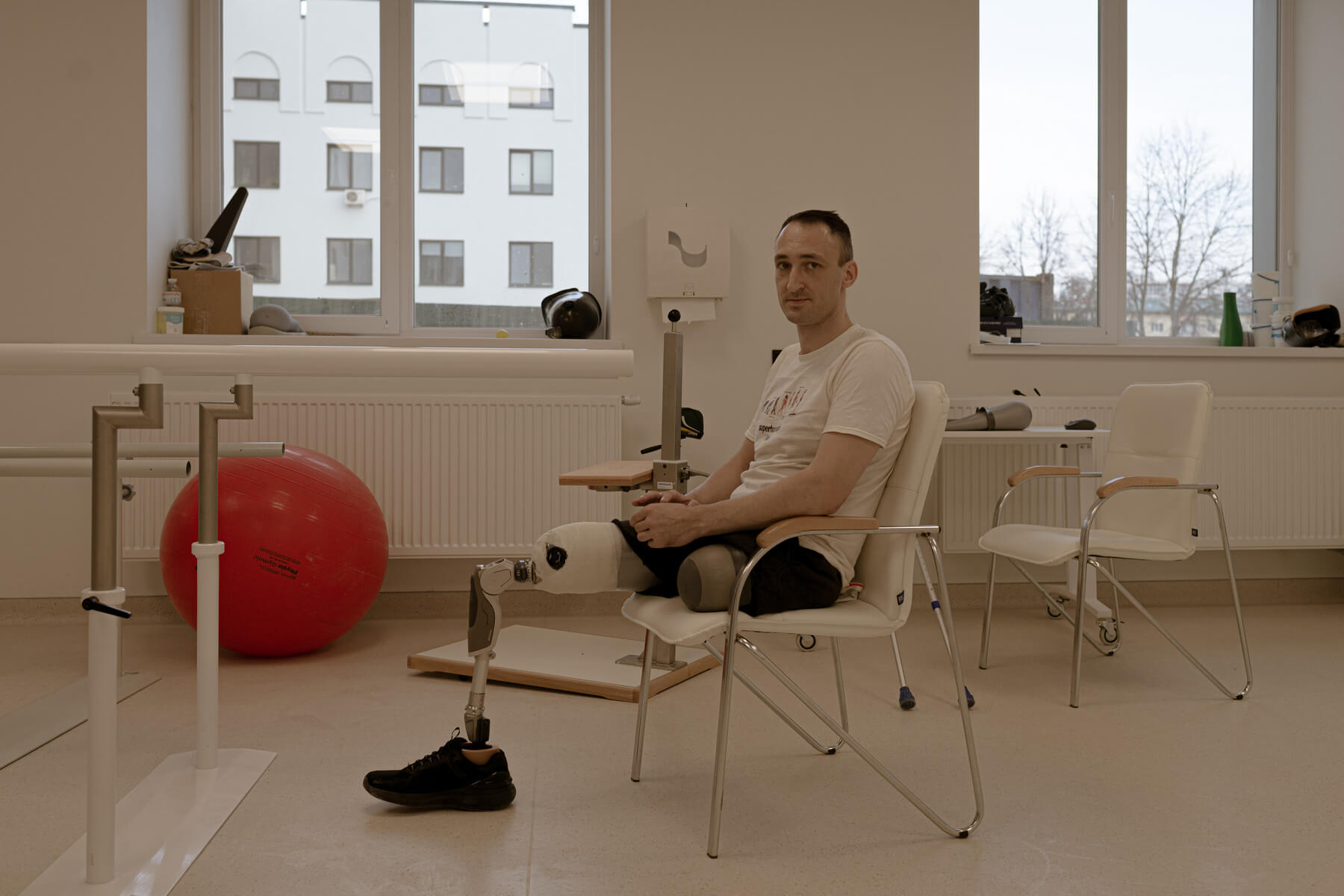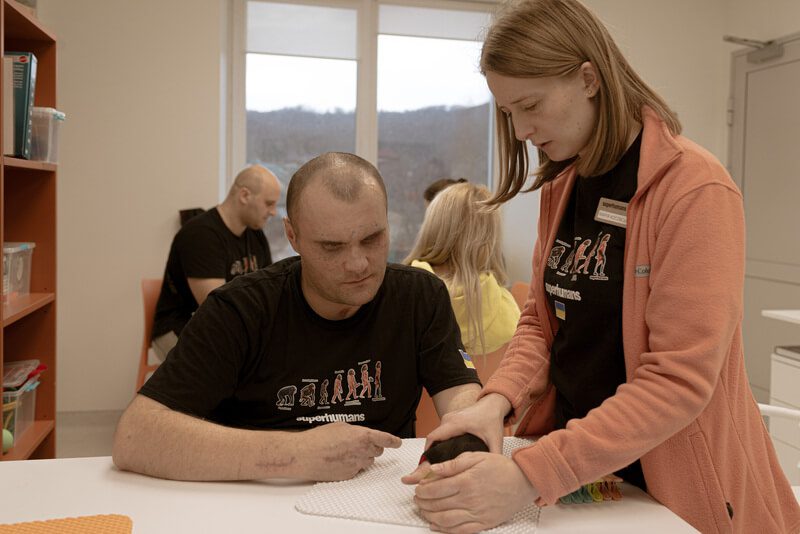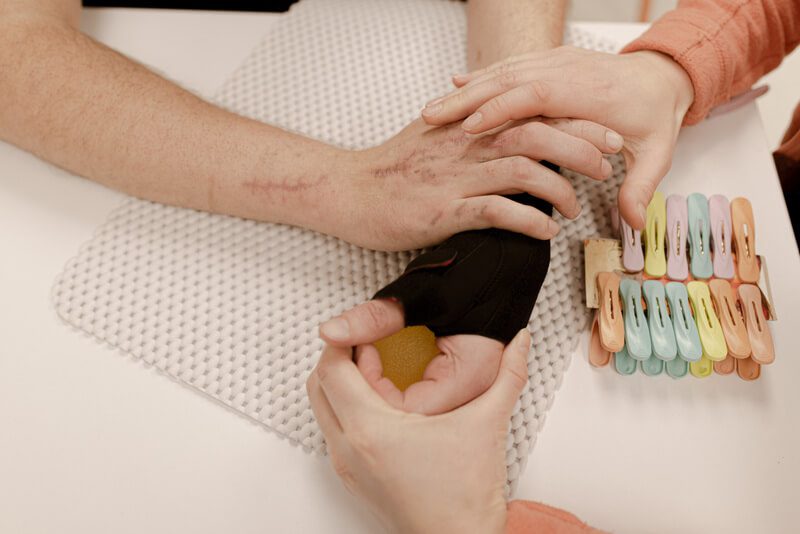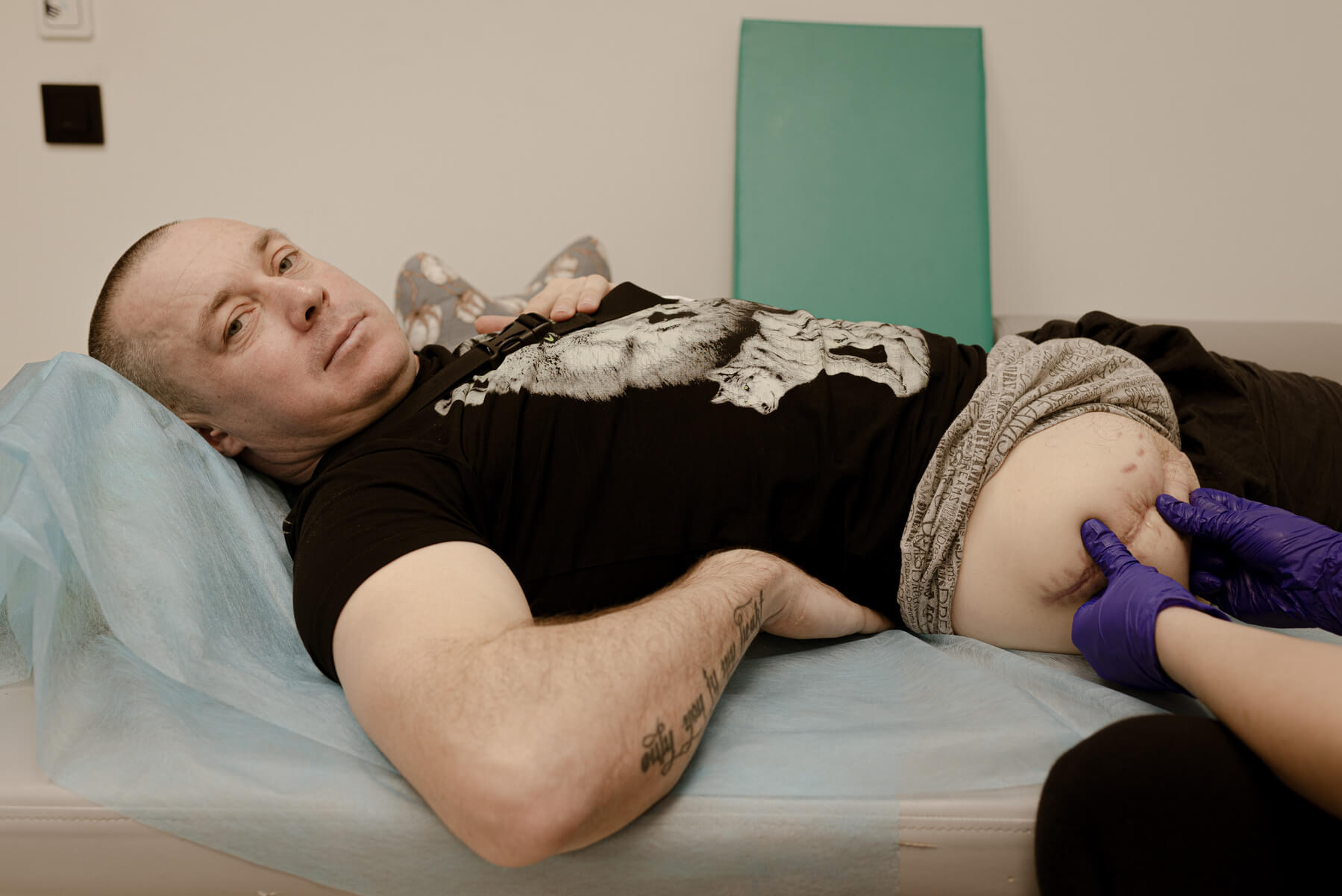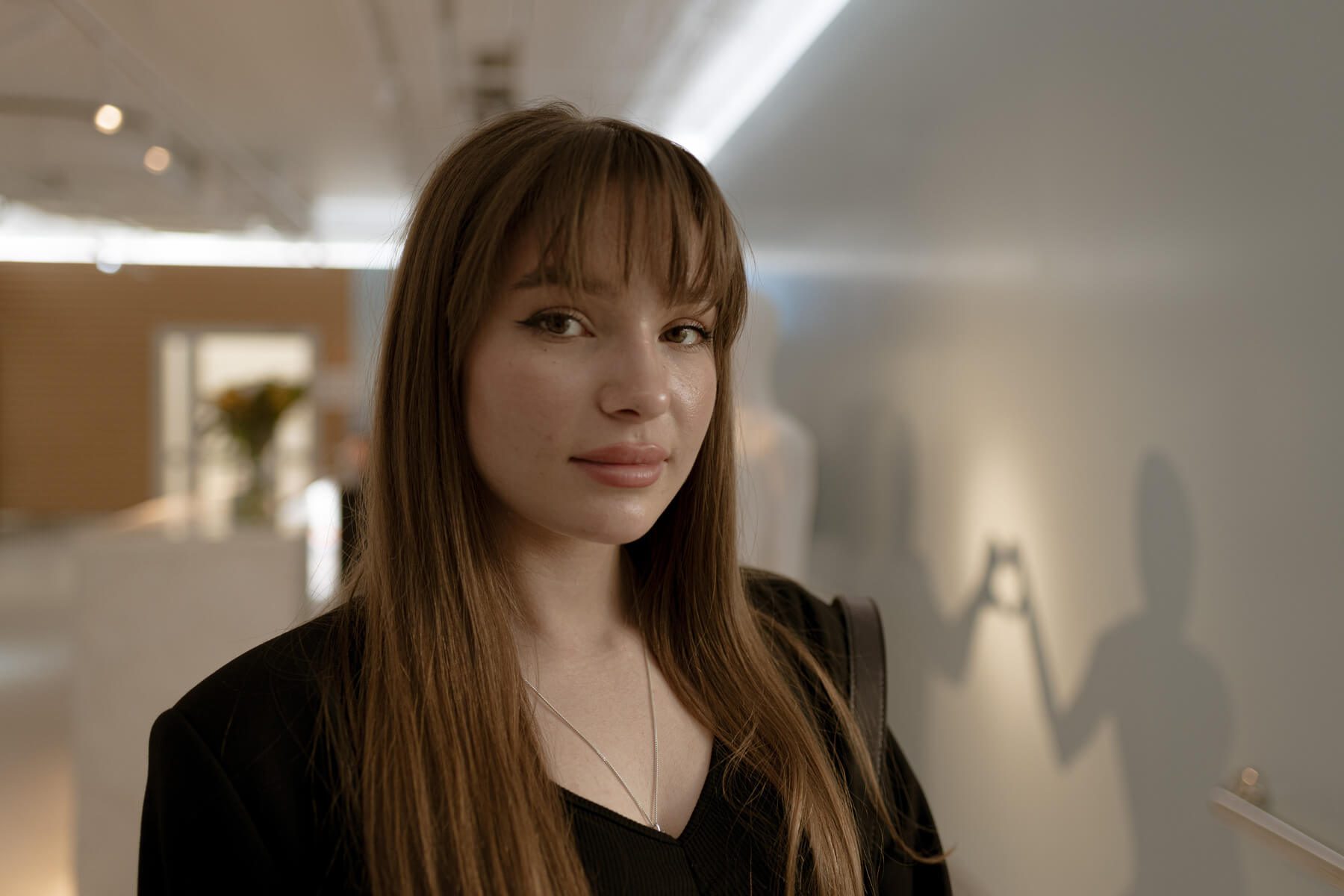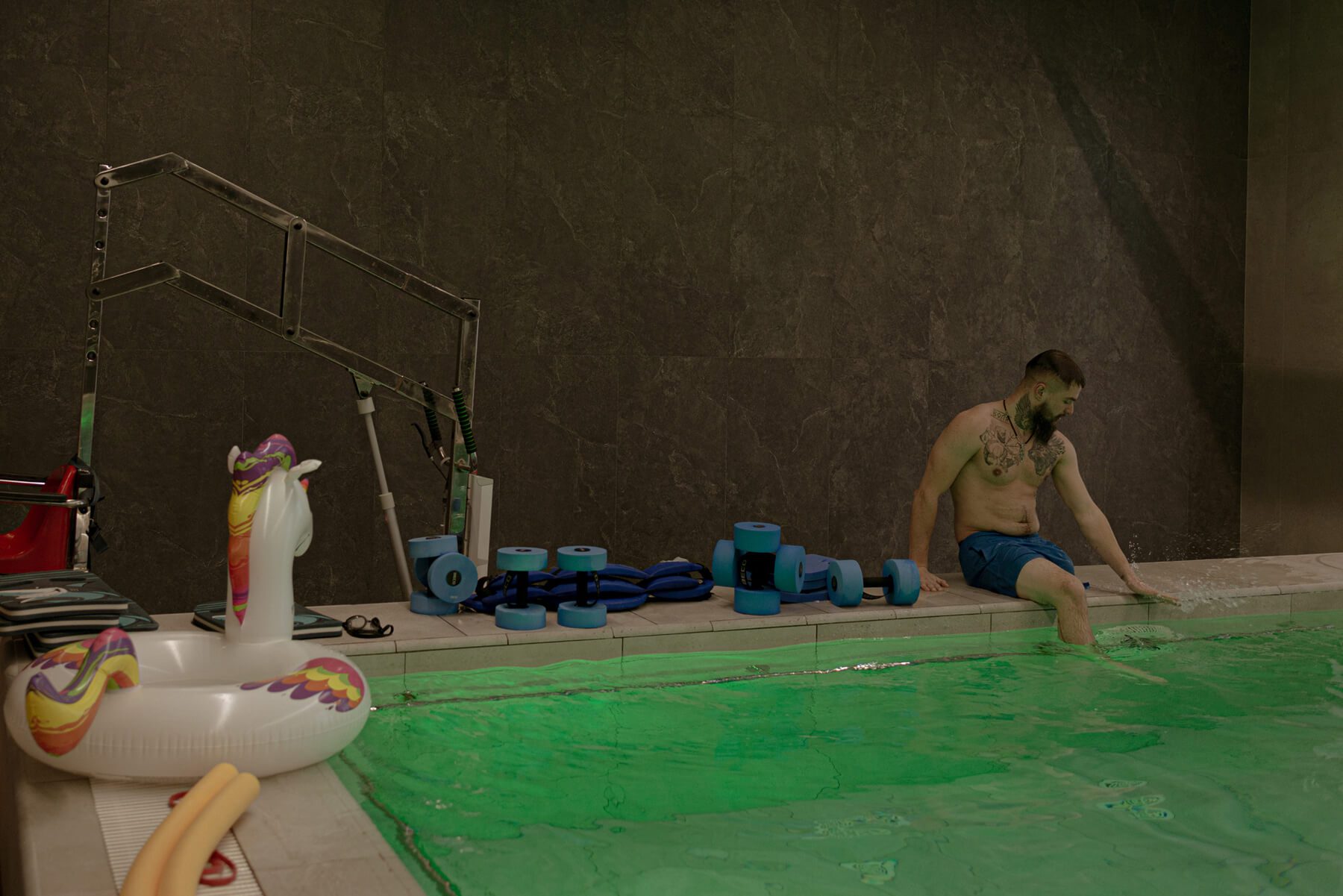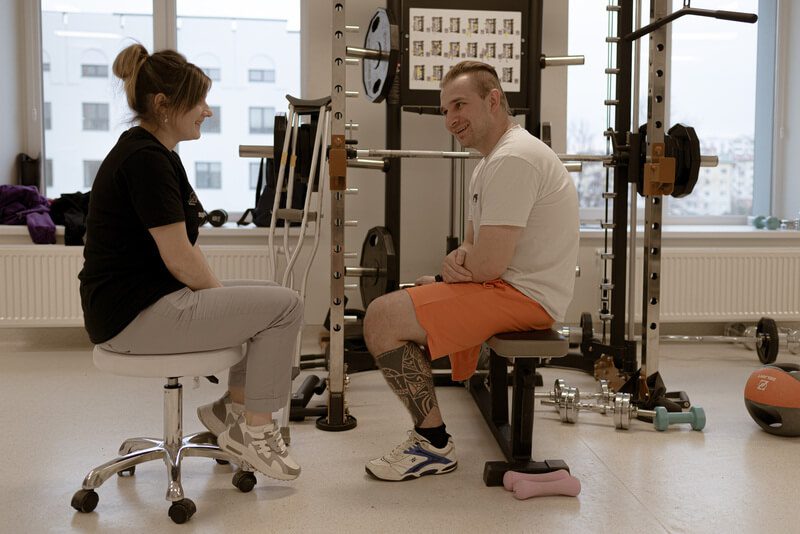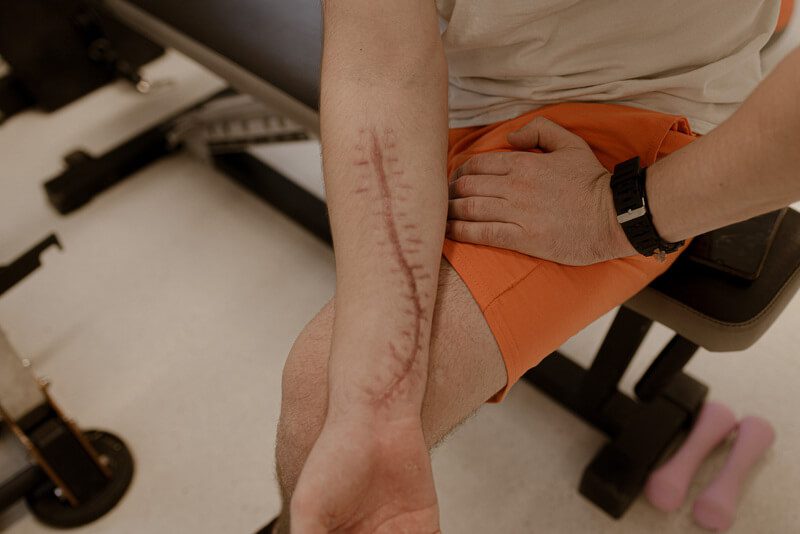Two years of the war in Ukraine by the testimonies of those who fought it on the front line. Impressive accounts of Ukrainian soldiers who survived but lost limbs or were seriously injured in other ways. They are now recovering at the Superhumans rehabilitation center in Lviv region, co-founded by American millionaire and philanthropist Howard Buffett, who donated 15 million dollars. A square in Bucha, on the outskirts of Kyiv, was named after him.
The website of the Superhumans prosthetic rehabilitation center in Lviv region reads: “We give Ukrainians a superhero life they deserve.” The nonprofit center, opened on April 14, 2023, has already provided hundreds of prostheses to military personnel and civilians. All users have to apply online. There is currently a waiting list of around 500 people, most of them for facial reconstruction surgery. Sixty people pass here every day, between rehabilitation, prosthesis construction and the swimming pool.
It all starts with the part of the limb that has been amputated, the stump. Sometimes the leg that was initially amputated has to be amputated again, explains Andriy Ischyk, the center’s public relations manager. Then it’s on to the construction of the socket, where the limb will fit. The center uses two methods for construction, one from a plaster cast, and the other from the leg itself, using 3D printing, which makes the process quicker, around 30 minutes.

Andriy Ishchyk talking about the first plastic socket, and how its form can be easily changed if heat is applied. Superhumans rehabilitation center, Lviv region, February 2024. Photo: André Luís Alves
As Andriy shows us the center, Zaborona meets several wounded soldiers. Among them is Volodymyr, under 30 years old, from Kharkiv region. Tomorrow, he’s expecting to see his two-year-old son for the second time since he was born. “They’re coming to see me. They live in Germany,” he says with a smile.
“It was a lepestok (butterfly) mine last October in Klishchiivka,” he recalls. Plastic anti-personnel mine, 12 cm, liquid explosive of 37 grams, active for 10 years. Introduced by the Soviet Army in Afghanistan, where it injured thousands of children because it looks like a toy. “I was supposed to work with drones, but the position was unavailable, so I was transferred to infantry near Bakhmut.”

Volodymyr lost his right foot after stepping on “lepestok” (an anti-personnel land mine) near Bachmut. Superhumans rehabilitation center, Lviv region, February 2024. Photo: André Luís Alves
He began rehabilitation a week ago and is taking his first steps with the prosthesis. Before arriving here, he was in five different hospitals. At this center, he feels he’s being treated at the best level possible.
“The final socket is made here in this room. We use carbon because it’s a strong material, light but rigid,” explains Andryi, holding a piece of carbon tape in his hand.
Scarcity and local production
There are only five upper limb prosthetists in Ukraine. It’s not a problem for the lower limbs. “We have about five or six therapists for the lower limbs and two for the upper limbs. One more is under training here,” adds Andriy. The center has a warehouse with several spares, customizable prosthesis, and provides full assistance to all patients. This, according to him, contrasts with the experience of patients who have received prostheses abroad. “Care and rehabilitation are easily compromised by the distance,” he states.
Hryhorii Hryhorenko has been producing plaster casts in the shape of stumps for the last eight years. When Andriy introduces him as the center’s sculptor, Hryhorii laughs. “Before the full-scale invasion, it was mostly civilians, and amputations were caused by diseases like diabetes. Now I have much more work, and it is mostly military personnel.” Andriy says that the official number for wounded civilians with amputations in Ukraine is 500 people, but we both agree that it sounds unrealistic. As for soldiers, it ranges from 20 to 50 thousand by the summer of 2023, which is already comparable to the numbers of the First World War.

Hryhorii Hryhorenko, “the sculptor.” He has been working with stump plaster casts for the last eight years. “Before 2022, it was mostly for civilians. There’s a lot more work now, and mostly for the military,” he says. Superhumans rehabilitation center, Lviv region, February 2024. Photo: André Luís Alves 
Plaster casts of stumps, one for each patient. These casts are used to shape the first plastic socket in transparent material that can be easily reshaped with heat before the final socket is made out of carbon. Superhumans rehabilitation center, Lviv region, February 2024. Photo: André Luís Alves
On the second floor, 35-year-old Serhii from Kyiv with two leg prostheses is walking with support of parallel bars. A doctor is adjusting his prosthesis because one of the stumps has become shorter.
“I would rather not remember it in detail. It was easier before. It was all very stupid and ordinary: an attack in Kostyantynivka, near Bakhmut, in July 2023. We were in a five-storey building, sleeping on the first floor. At around 1am, two rockets destroyed the building. I spent eight to ten hours under the rubble, waiting for help,” he explains. Serhii says they were going to be there only for four days to establish their position. “We were attacked on the third day. I was with three other colleagues who got out of the building unharmed because they were sleeping in the corners of the rooms. I was in the middle, and everything fell on me,” he says, shrugging his shoulders.
Serhii is trying to go on with his life as normal as possible. He has a three-year-old son.

Serhii is resting after his exercises. The doctor took one of his protheses for adjustment. Superhumans rehabilitation center, Lviv region, February 2024. Photo: André Luís Alves
We enter a workshop with unfinished prosthetic works and several prostheses of legs. “We collaborate with companies like Ottobock for the prosthesis. So far we’ve only produced the carbon socket, although we have plans to develop and manufacture the prostheses here in three years time. Perhaps we will hear about it in a year’s time. We have a partnership with the Lviv Polytechnic University,” explains Andryi.
Local production will result in a greater number of prostheses available. For example, the cost of one prosthesis in Germany is enough to produce three in Ukraine, adds the manager, because other expenses are increasing. They used to rely on a mechanical knee, which costs three to five thousand dollars, but now they use a more sophisticated, electronic one, which costs 18 times more. It’s more expensive than a small apartment in most Ukrainian cities.
Volodymyr is doing sensitisation exercises with a therapist. “You can photograph me, but I don’t want to say anything about this war,” he says in English. Volodymyr’s hands and face are deformed, dark from the fragments of the explosion that almost blinded him. He doesn’t need to say anything about the war, as we’re left speechless by his presence. The therapist touches his hands softly while he presses clothes pegs to strengthen his fingers.

Volodymyr with a therapist. Superhumans rehabilitation center, Lviv region, February 2024. Photo: André Luís Alves 
The therapist touches Volodomyr hands softly while he presses clothes pegs to strengthen his fingers. Superhumans rehabilitation center, Lviv region, February 2024. Photo: André Luís Alves
Next to him is Dmytro Voloshchenko. He lost his right leg to the hip bone. Other therapist massages his scar while he closes his eyes for a moment. We move away not to derange the routine of the treatment.

Dmytro Voloshchenko receiving a massage on his scar. Superhumans rehabilitation center, Lviv region, February 2024. Photo: André Luís Alves
The center is funded exclusively by donations. Anyone can donate through their website, and the service is completely free. First Lady Olena Zelenska and Health Minister Victor Lyashko are part of the supervisory committee, and there is an agreement with the Ministry of Defence of Ukraine, but the government does not contribute financially. “We hope that the Superhumans center will set an example of how the system should work in the future,” concludes Andriy Ischyk.
The fundraising operation began before opening
Howard Buffet’s foundation started the funding with 15 million dollars for the construction of the buildings and 1 million dollars for the purchase of prosthesis. But now there are several partners, such as SoftServe, one of Ukraine’s largest IT companies, which has donated one million dollars for the development of arms, and the Ukrainian shopping website Rozetka, which is also funding the rehabilitation.
A facial reconstruction surgery clinic is being built next door. This is something the center doesn’t yet offer, and most of the patients in the center’s waiting list are awaiting a facial surgery.
From heroes to superhumans
20-year-old Ruslana Danilkina from Odesa recounts the first few months of her experience as a patient. She was wounded a year ago in Kherson region. “After the amputation, I couldn’t imagine my future life at all. I could only see for three or four days at most. The improvement came in waves. Sometimes I didn’t even want to get dressed or have coffee with my parents. The key moment was two months after I lost my leg, when it was getting close to the day I would get the prosthesis. The first few months I wore it were complicated because it hurt, was uncomfortable and itchy. It took a while before I understood I could live like this.”
“What can’t you do with your leg?” I ask. “For example, regular squats. I started trying alternative exercises. It was then that I realized I could do almost everything, but in a different way. You have to learn.”

Ruslana Danilkina, 20 years old, from Odesa. She was wounded a year ago in Kherson region. Now she uses a prothesis on her left leg. Amputation was done above her knee. She became an icon of resilience due to her story and very young age. Superhumans rehabilitation center, Lviv region, February 2024. Photo: André Luís Alves
Andriy interrupts her. “But you took part in a marathon!” Ruslana explains that it was not a marathon. She actually only ran 50 meters, and then walked five kilometers. “Before I got hurt, I did a lot of sports,” she says. “The time at the hospital was tough, I just had to survive.”
“My mum is still on the front line,” she replies when asked what she thinks about the war.
In the pool on the ground floor, we encounter Oleksii. He wants to train hard not to answer questions. He even jumped into the water, as if his left leg was not missing. It seemed he was coming to talk, but he just goes back to swimming again, only to stop in the hydro massage part.

Oleskii is resting after several swimming rounds. He trains almost without breaks, determined to gain back his physical condition. Superhumans rehabilitation center, Lviv region, February 2024. Photo: André Luís Alves
Finally, in the gym, we find Ihor, 29 years old. He’s from the Sumy region. Before the war, he was a personal trainer.
“It was a drone with a loitering munition. I had four tourniquets with me. I had to apply three: to my leg, arm, and hand. After four hours, I couldn’t feel my leg, it was completely black. I was sure it was lost. I saved my arm, because I had the tourniquet on my shoulder for almost 14 hours, and after an hour it was totally numb. I waited alone on the floor for 13 hours until I was evacuated. It took them about an hour and a half just to get me into the ambulance,” he tells.
Injured on September 11 last year, he still hasn’t started using the prosthesis. “Today was the first day. They made the socket where the prosthesis will fit.” For the time being, he has no plans to return to the Armed Forces of Ukraine, but if the war continues for a long time, he may try to do so after recovery.

Ihor chatting with his therapist during a gym session. Today he had his socket made, the first big step in the recovering process. Superhumans rehabilitation center, Lviv region, February 2024. Photo: André Luís Alves 
Before the war, Ihor was a personal trainer. He almost lost his arm, but he was lucky. As he recalls, “The tourniquet worked well, although I lost strength and some movements.” Superhumans rehabilitation center, Lviv region, February 2024. Photo: André Luís Alves
Ihor was part of the 132nd Separate Reconnaissance Battalion fighting in Verbove, near Robotyne in the Zaporizhzhia region. “It’s a labyrinth of trenches. That’s why I waited alone for so long,” he says.
Many in his unit died. Ihor was the only one seriously injured.
“That place is hell. No matter what anyone says, right now it’s the worst place, Avdiivka or Bakhmut are not comparable. There are mines, wires on the ground, and ammunition scattered around. Staying overnight, even in the summer, is terrible. You can’t get warm. You can’t have anything turned on. They can easily identify you and are very meticulous in their drone attacks. You’re in a foxhole. Nothing warms you up, you’re shivering, you hug your machine gun and stay there… That’s war. We’re all going if we have to, we’re all going… And what’s left? We don’t want to live in fear,” Ihor vents.

